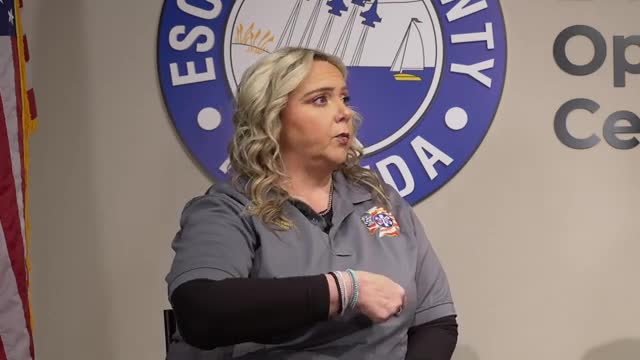Emergency services urge caution amid surge in 911 calls
November 14, 2024 | Events, Escambia County, Florida
This article was created by AI summarizing key points discussed. AI makes mistakes, so for full details and context, please refer to the video of the full meeting. Please report any errors so we can fix them. Report an error »

In a recent government meeting, officials discussed the challenges faced by emergency communications in handling a high volume of 911 calls. The conversation highlighted the importance of assessing whether a situation constitutes an emergency, with representatives emphasizing that individuals should not hesitate to call 911 if they are uncertain about their condition.
During the meeting, it was noted that emergency call volumes peak during specific times of the day, particularly in the early morning and late afternoon. This influx can strain resources, as call-takers often juggle multiple calls simultaneously, which can delay response times for urgent situations. The representatives explained that when all call-takers are occupied, calls are rerouted to backup services, including the sheriff's department and city dispatch, to ensure that no call goes unanswered.
A significant point raised was the misconception that calling 911 guarantees immediate treatment at the emergency room. Officials clarified that triage protocols prioritize patients based on the severity of their conditions, meaning that those with less critical issues may face longer wait times.
The discussion also touched on the impact of non-emergency calls on ambulance availability. When ambulances are tied up with patients who do not require immediate transport, it can hinder their ability to respond to true emergencies. To alleviate this, officials encouraged the public to consider alternatives such as urgent care facilities or hospital nurse hotlines for non-critical health concerns.
Ultimately, the meeting underscored the importance of public awareness regarding when to call 911 and the resources available for non-emergency situations, reinforcing that if in doubt, individuals should not hesitate to reach out for help.
During the meeting, it was noted that emergency call volumes peak during specific times of the day, particularly in the early morning and late afternoon. This influx can strain resources, as call-takers often juggle multiple calls simultaneously, which can delay response times for urgent situations. The representatives explained that when all call-takers are occupied, calls are rerouted to backup services, including the sheriff's department and city dispatch, to ensure that no call goes unanswered.
A significant point raised was the misconception that calling 911 guarantees immediate treatment at the emergency room. Officials clarified that triage protocols prioritize patients based on the severity of their conditions, meaning that those with less critical issues may face longer wait times.
The discussion also touched on the impact of non-emergency calls on ambulance availability. When ambulances are tied up with patients who do not require immediate transport, it can hinder their ability to respond to true emergencies. To alleviate this, officials encouraged the public to consider alternatives such as urgent care facilities or hospital nurse hotlines for non-critical health concerns.
Ultimately, the meeting underscored the importance of public awareness regarding when to call 911 and the resources available for non-emergency situations, reinforcing that if in doubt, individuals should not hesitate to reach out for help.
View full meeting
This article is based on a recent meeting—watch the full video and explore the complete transcript for deeper insights into the discussion.
View full meeting